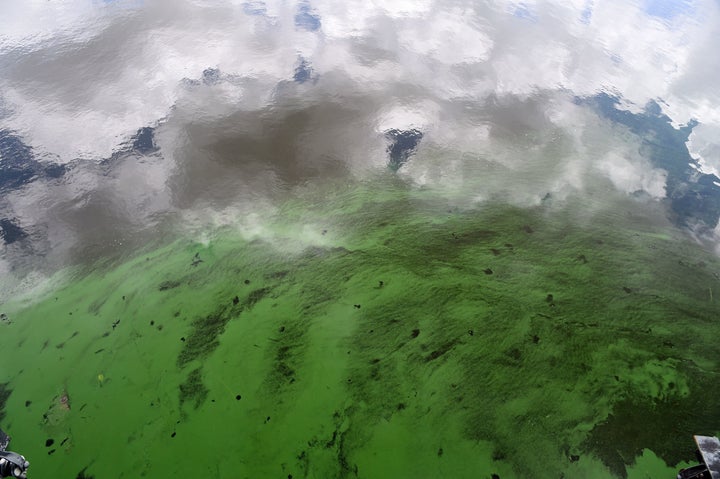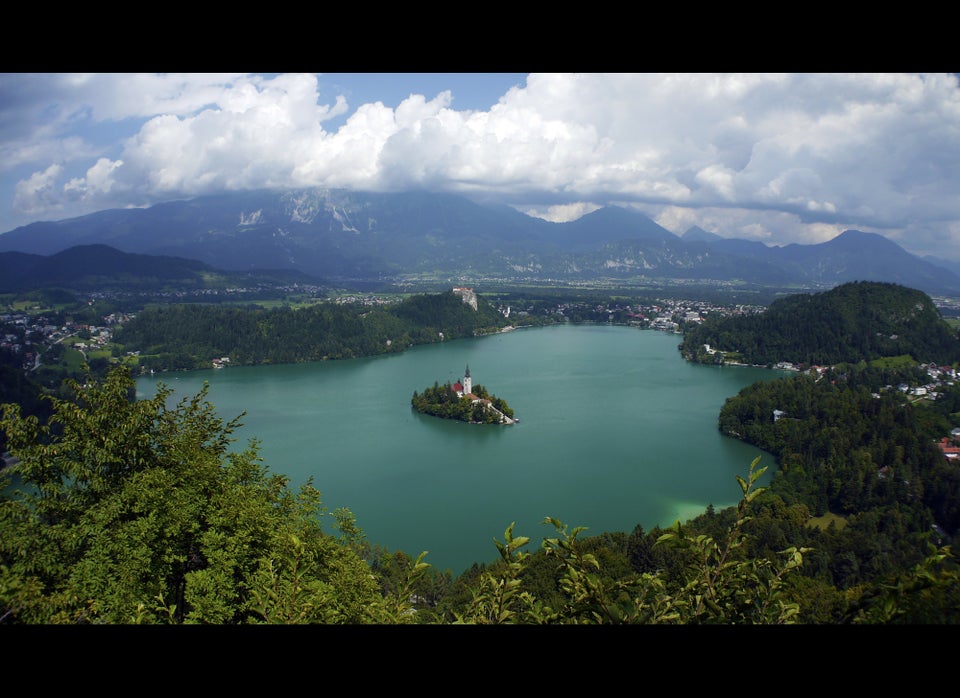By now you may have seen the pictures coming out of many of South Florida’s coastal communities: Many miles of smelly, “guacamole-thick” algal blooms cropping up along beaches and rivers — blooms so big they can even be seen from space.
Algal blooms like those currently fouling up many Florida waterways are caused, according to the EPA, by the buildup of nutrients like nitrogen and phosphorus in water. This buildup is primarily the result of excess fertilizer being used in agricultural and home yard settings and then running off into local waterways following heavy rains. Improperly-functioning sewer and septic systems can also be a factor.
The problem is massive and officials are calling it “unprecedented,” resulting in the closing of beaches and many water-dependent attractions at the height of the region’s busy tourist season. But it’s also something that has been some time in the making.
In the specific case of Florida’s blue-green algal blooms, experts say the catalyst was nitrogen and phosphorous buildup traced back to pollution of Lake Okeechobee, the state’s largest freshwater lake. The lake flows into canals connected to coastal rivers like the Caloosahatchee to the west and the St. Lucie to the east, areas that have both been hit hard by the toxic blooms.
Dr. Bill Louda, a research professor at Florida Atlantic University in Boca Raton who has been studying and testing the algae, put the situation’s root cause more bluntly: “Basically we’re fertilizing South Florida to death.”
The issue with the blooms isn’t just that they are unsightly and smelly, but also that the algae could be devastating for local economies and ecosystems alike. Algal blooms sometimes produce toxins that can sicken or kill both humans and animals and can produce “dead zones” where aquatic organisms die because the water lacks the oxygen they need to survive.
“The impact is tremendous,” Louda told The Huffington Post. “We have to stop somewhere.”
Recognizing the gravity of the problem, Florida Gov. Rick Scott (R) declared a state of emergency in four impacted counties — Lee, Martin, Palm Beach and St. Lucie — late last month.
On Wednesday, Scott announced that he would propose new funding to address the algal blooms through a grant program helping homeowners living near bodies of water to switch from septic tanks to sewer systems, in addition to supporting communities’ building of improved wastewater systems.
Sen. Marco Rubio (R-Fla.) added his support to Scott’s call for a federal emergency declaration Thursday, calling the situation “a health, ecological and economical emergency.” In a separate news release issued Wednesday, he asked the Centers for Disease Control to “remain vigilant” of the blooms and the impact they can have on the health of Florida residents and visitors, some of whom have already reported headaches, respiratory problems and rashes believed to be linked to the algae.
Despite the alarm, experts say little can be done to address the problem in the short-term aside from continuing to monitor it.
“You could throw some nasty herbicides or synthetic inhibitors on top of it, but it would kill everything else too, the seagrass, the phytoplankton fish eat,” Louda said. “We just have to let nature take its course.”

The U.S. Army Corps of Engineers has already reduced the flow of water from Lake Okeechobee in an effort to reduce the blooms. The USACE confirmed in a Thursday news release that it will continue to discharge water from the lake at its current, reduced rate as conditions in the Caloosahatchee and St. Lucie estuaries have “shown slight improvement.”
Meanwhile, the region’s “bloom response team,” including the Florida Department of Environmental Protection, five water management districts and the state’s departments of health, agriculture and fish and wildlife, told Huffpost via email that they will continue to respond to reports of blooms as they receive them. The team is urging residents to report blooms to the department either through its dedicated website or a new toll-free number.
And while the effort to address the Florida blooms continues, the problem appears likely to crop up elsewhere this summer. In recent years, record-breaking blooms have formed in coastal areas of the Pacific Ocean, in Lake Erie, in the Chesapeake Bay and in the Gulf of Mexico, where a dead zone has grown to approximately equal the size of the entire state of Connecticut.
Environmental advocates and scientists alike say the conditions are ripe for algal blooms to continue to become more common.
“No matter what part of the country you live in, there is probably a lake, a river or some body of water near you that will experience some form of harmful toxic algal bloom this summer,” Colin O’Neil, agriculture policy director at the Environmental Working Group, told HuffPost.
And while factors such as climate change are likely a big part of the reason why that’s the case, advocates point to the agricultural industry as the primary culprit.
In a new report released last month, researchers at Environment America, a Boston-based nonprofit, linked the growth of algal blooms and dead zones nationally to pollution caused by large agribusiness companies.
The report estimates the “manure footprint” of five major agribusinesses — Tyson, Smithfield, Cargill, JBS and Perdue — at nearly 163 billion tons of manure annually. All that poop has to go somewhere.
“These factory farm operations generate so much manure they don’t know what to do with it. And the easiest thing to do is spread it around on crop land,” John Rumpler, the report’s author and senior attorney at Environment America, told HuffPost. “That runs off and can go into nearby rivers, lakes and streams.”
To reduce the amount of water pollution coming from these large farms, the EA report recommends using cover crops and buffer zones to reduce runoff from the growth of commodity crops, as well as using less fertilizer.
In addition, EA supports raising livestock in smaller-scale operations that minimize high concentrations of manure. All of that, Rumpler writes in the report, should be both regulated and incentivized by the EPA and other government agencies.
Until that happens, don’t be surprised if your favorite beach is suddenly closed next weekend.
“This is about where we swim, where we fish, where we draw our drinking water,” Rumpler said. “When you work that back up the chain, you see that the folks that are selling us our food are polluting our water.”

